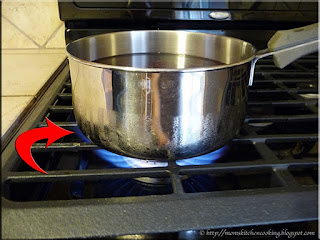The price of hydro in our corner of beautiful Ontario, Canada is skyrocketing despite the fact that Ontario generates a good amount of hydro via hydro, coal and nuclear power plants. Much of that hydro apparently is sent to the United States. We are now on TOU pricing meaning that most cooking is done during peak hours or in terms of economics at the highest kWH price. I really loved my Jenn-Air electric range but decided to go with natural gas when we moved. Natural gas has always been less expensive in Ontario. It is about a third of the price of hydro if not a bit less so in terms of economics it made good sense to switch cooking over to natural gas given the amount of cooking and canning that we do.
Rule Number One: If you smell gass, do not attempt to light the burner or turn on anything electrical including a light switch as that could cause the natural gas to ignite. Call your gas provider immediately and vacate the premises until the issue has been resolved!
Never have flammables like t-towels (red X) near the stove. Yes they can catch fire when using electric burners but there is a greater risk when using natural gas. Long hair should be tied back and loose fitting clothing should be avoided. Curtains should not be used in a kitchen where they could accidently come into contact with an open flame such as a gas burner. Always light the burner after the pot or pan has been placed on the burner (red arrow)!
Once the pot is on the burner you can safely light the burner. Newer gas ranges have an electronic ignition so turn to ignite then once the burner is lit, turn the knob to cook and adjust the flame height. In the event the hydro service is disrupted you can light the burner manually by turning to ignite and lighting with a match. Once lit, turn to the cook setting and adjust the flame.
The flame should be blue or mainly blue and it should not come up the sides of the pot or pan (red arrow). From basic chemistry a blue flame burns hotter than yellow or orange. A yellow/orange flame means there is dust, dirt or air in the gas line. Adjust the flame so it is sitting below the pot or pan, not coming up the sides. If the flame comes up the sides of a pot or pan you waste as much as 80% of heating capacity (aka not frugal) and you run the risk of damaging your cookware (also not frugal).
The properly adjusted flame will be inside the diameter of whatever pot or pan you are using and it should be mainly blue (red arrow). There may be condensation on the outside of the pot but that is normal, no cause for concern.
I did quick soak of kidney bean for chili a couple of days ago (pictured) then fully cooked them. Hands down the natural gas burner was superior to cooking beans on an electric burner. I opted for a gas range with enclosed burners and continuous burner grates as opposed to individual burner grates. This makes clean-up a snap as boiling water can be poured over any spills to easily wipe up. What I really like is the controllability of the burner. The flame can be adjusted for just about any sized pot and when I want it off, it is off immediately. All in all cooking with natural gas is a lot nicer!









0 food lovers commented:
Post a Comment